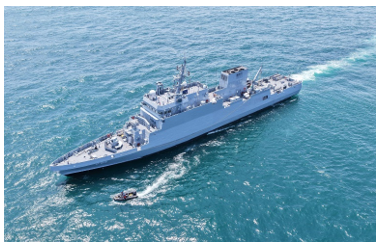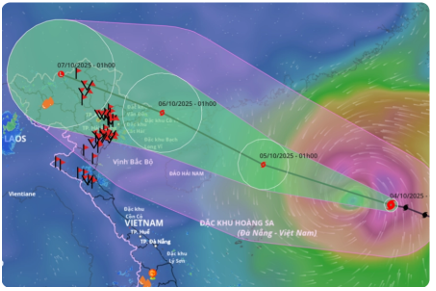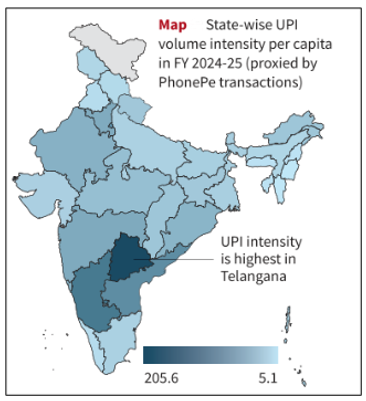News in Short
Exercise KONKAN-2025
Context: India hosted the annual bilateral maritime Exercise KONKAN-2025 on the west coast of India.
Exercise KONKAN-2025
- The Exercise is held between the Indian Navy and the UK Royal Navy.
- The bilateral naval exercise commenced on 5 October 2025 and will continue till 12 October 2025 off the western seaboard of India.
- The exercise aims to reaffirm the shared commitment of India and the United Kingdom towards maintaining secure, open, and free seas.
- This engagement exemplifies the Comprehensive Strategic Partnership envisioned under the India-UK Vision 2035.
- The exercise KONKAN was held for the first time in 2004.
- Phases of the Exercise: The harbour phase and the sea phase.
Harbour phase: Will include professional interactions between naval personnel, cross-deck visits, sports fixtures, and cultural engagements. Additionally, Joint Working Group meetings and Subject Matter Expert Exchanges are also scheduled.
Sea phase: Will encompass complex maritime operational drills focusing on anti-air, anti-surface, and anti-submarine exercises, flying operations and other seamanship evolutions.
- Participating Forces:
The UK Carrier Strike Group (CSG-25), led by the aircraft carrier HMS Prince of Wales, is participating, along with assets from Norway and Japan, as part of the UK’s global deployment Operation Highmast.
The Carrier Battle Group represents the Indian Navy centered around the indigenous aircraft carrier INS Vikrant, supported by other surface, sub-surface, and air combatants.
- After completing Exercise KONKAN-2025 on 12 October 2025, the UK Carrier Strike Group (CSG)-25 will hold a one-day exercise with the Indian Air Force on 14 October before continuing its deployment.
INS Androth
Context: Recently, the Indian Navy commissioned INS Androth, the second Anti-Submarine Warfare Shallow Water Craft (ASW-SWC) at the Naval Dockyard, Visakhapatnam.
About INS Androth

- The ship is the second vessel in the Anti-Submarine Warfare Shallow Water Craft (ASW-SWC) series built by Garden Reach Shipbuilders & Engineers (GRSE).
- The first ship to be commissioned in this category was INS Arnala, earlier in June.
- It is named after Androth, the northernmost island of the Lakshadweep group, reflecting its historical and strategic maritime significance.
- The vessel is 77 metres long and has a displacement of about 1500 tonnes.
- It is designed for anti-submarine operations in coastal and shallow waters.
Key features of INS Androth
- It has over 80% indigenous content, highlighting India’s technological advancement and industrial capacity in defence manufacturing.
- The ship is fitted with advanced weapons, sensors, and communication systems to detect, track, and neutralise underwater threats effectively.
- It is powered by three waterjet propulsion systems driven by marine diesel engines, making it highly agile and manoeuvrable.
- The ship is capable of performing maritime surveillance, search and rescue, coastal defence missions, and low-intensity maritime operations (LIMO).
- The ship features modern machinery, automation systems, and advanced control technology for efficient performance.
Typhoon Matmo
Context: Recently, Typhoon Matmo caused widespread evacuations and damage across the Philippines and southern China in early October 2025.
More on the News

- The typhoon formed as a tropical depression over the western Philippine Sea on 1 October 2025 and developed into a tropical storm the next day.
- It made landfall in Isabela province on 3 October with sustained winds of about 130 km/h.
- More than 7,000 people were evacuated from flood and landslide-prone areas across the mountainous northern provinces.
- After moving across the South China Sea, it made landfall in Guangdong province on 5 October, prompting the evacuation of 150,000 residents.
- Meteorological agencies issued warnings for Guangxi and northern Vietnam as the storm moved westward.
Tropical Cyclones
- The terms “hurricane” and “typhoon” are regional names for tropical cyclones.
- All tropical cyclones share a common mechanism: they draw heat from warm ocean surface waters to power horizontal, rotating winds.
- Although tropical cyclones can be similar in size to synoptic cyclones, their energy source is different.
- Synoptic cyclones (mid-latitude storm systems) derive energy from weather fronts and jet streams, whereas tropical cyclones are fueled primarily by ocean heat.
- Regional Names:
- Hurricane: Atlantic Ocean and East Pacific Ocean
- Typhoon: West Pacific Ocean
- Cyclone: Indian Ocean and near Australia
UPI Usage Intensity
Context: Telangana has recorded the highest per capita Unified Payments Interface (UPI) intensity among all the Indian States, according to a recent RBI Bulletin paper.
Findings of the RBI Study

- The study assessed UPI usage intensity using PhonePe transaction data as a proxy, as the platform accounts for 58% of total UPI transaction volume.
- UPI is an Indian real-time, instant payment system that allows multiple bank accounts to be linked into a single mobile application for seamless fund transfers.
- Other states showing high UPI intensity include Karnataka, Andhra Pradesh, Delhi, and Maharashtra.
- In contrast, cash withdrawal intensity remains high in northeastern States, Kerala, Goa, and Delhi.
- Shift Towards Digital Payments:
The rise of UPI has been identified as a major factor driving the decline in cash demand across the economy.
This trend is evident from the steady fall in ATM cash withdrawals as a percentage of GDP.
- Changing Nature of Transactions:
The average value of a single UPI transaction, also known as the “ticket size”, has been declining over time.
The bulk of peer-to-merchant (P2M) transactions by volume now fall within the sub-₹500 value range.
This indicates the growing use of UPI for low-value, everyday transactions, such as retail purchases and small payments.






